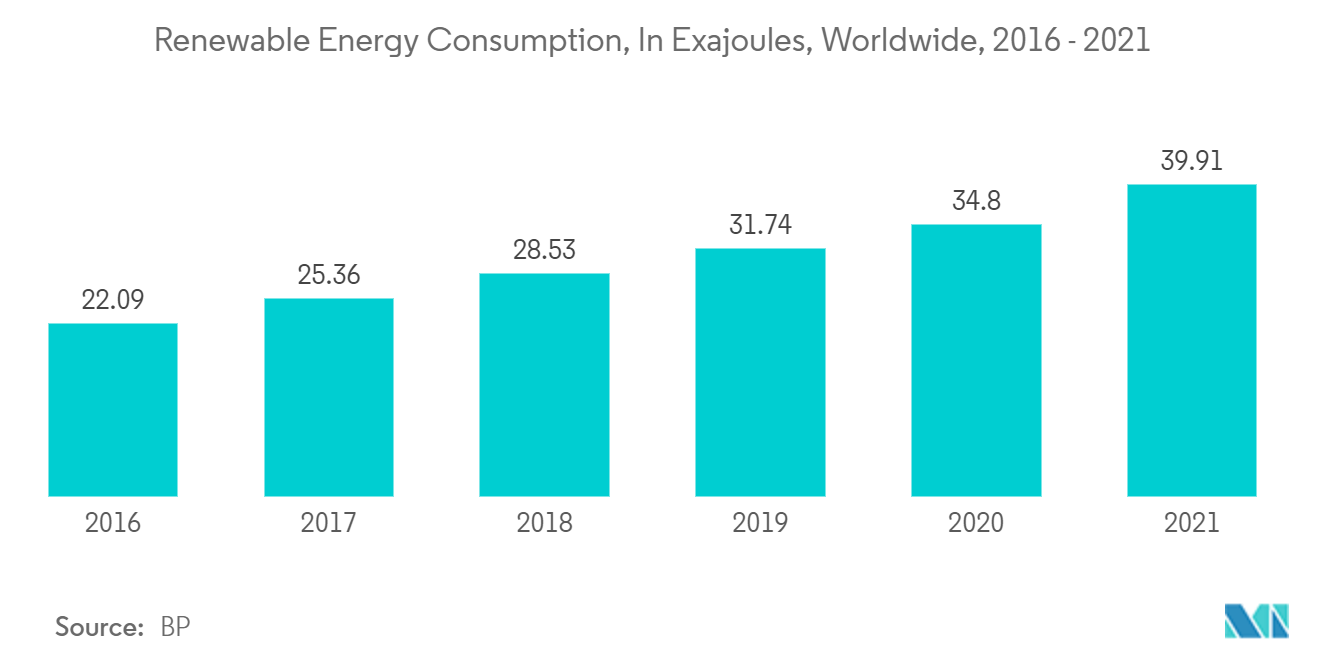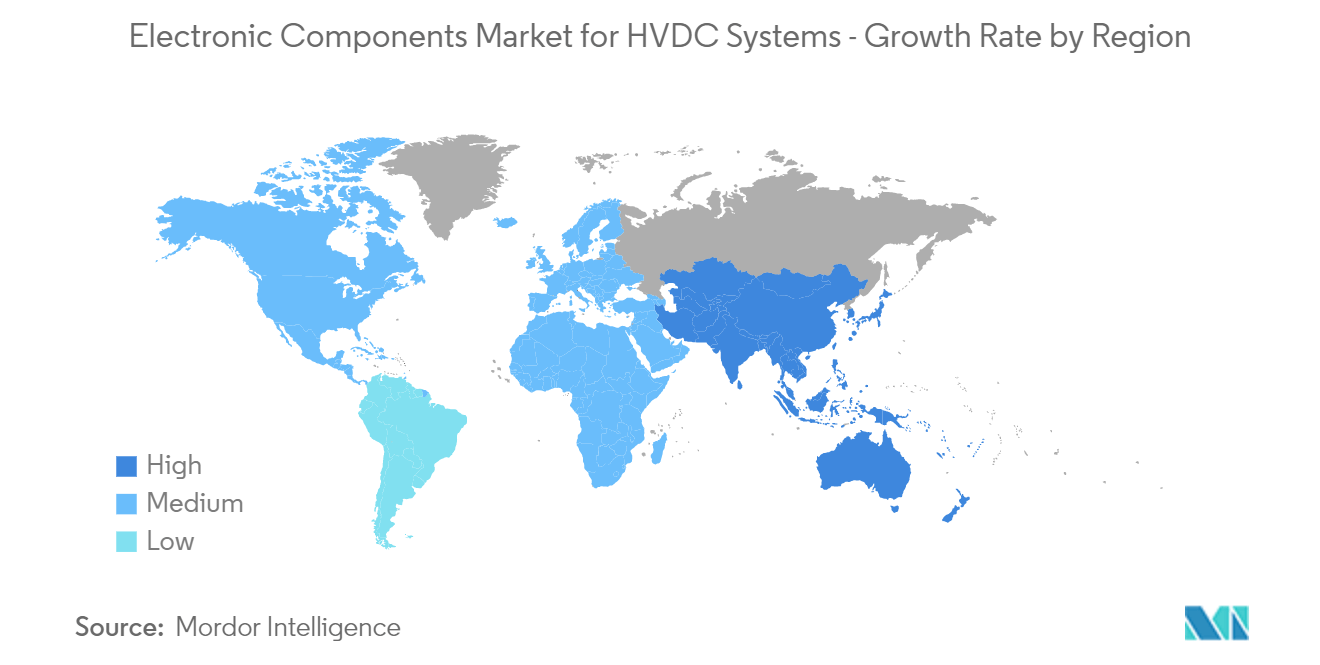Market Trends of Electronic Components Industry for HVDC Systems
Capacitors to be the Fastest Growing Passive Component
- An HVDC capacitor is considered one of the core components of the HVDC transmission system. It plays a crucial role in converting AC current to DC current, transporting power between HVDC convertor stations, and further changing the DC current back to AC to feed the electricity into the power grid. It significantly helps improve power quality, maintain voltage stability, and control power flow instantly, along with decreasing the possibility of short-circuiting current by swiftly managing the power flow in the transmission lines. An increased focus on utilities to avoid overload conditions, enhancing power flow between parallel lines, and the need for improving the system's stability is further increasing the adoption of power capacitors in HVDC transmission systems.
- Various HVDC capacitors include aluminum electrolyte capacitors, ceramic capacitors, glass capacitors, plastic film capacitors, reconstituted mica capacitors, and wet tantalum capacitors. Paper capacitors were one of the first types sold on the market. They are mainly made by sandwiching two sheets of aluminum foil with paper soaked in mineral oil. The product's entire assembly is rolled up, wire leads are attached to the aluminum foils, and the package is sealed with wax before being placed inside a cylindrical cardboard case.
- As renewable energy continues to surge worldwide, advancements in power capacitor technology, including flat winding technology, further contribute to efficient power transmission, lower transmission losses, and better energy savings. For instance, TDK's flat winding technology employed in its MKK DCi-R power capacitors facilitates a volume fill factor of about 95%, with a majority capacitance exceeding 10,000 microfarads, indicating a tremendous efficiency in storing electric charges. This energy density is about 10% higher than other technologies.
- Considering the working principle of flat winding technology, it first winds the conductive metalized foils and insulates dielectric films to form thousands of alternating capacitor layers. Further, the volume fills factor of a capacitor refers to how completely the case is filled with the capacitor, followed by further pressing the cylindrical winding into a nearly rectangular shape to save space in a stainless-steel case with very high energy density.
- With many characteristics enclosed, design engineers are essentially adopting this and other new power capacitor technologies for HVDC projects throughout regions such as Europe, the United States, and China. Concisely, capacitors are crucial components in the converter stations that transform the AC current fed in at the start of every HVDC link into DC current with stable voltage for transmission across long distances. Power capacitors allow more remote and eco-friendly renewable power generation that is more efficient with few losses.

Asia-Pacific is Expected to Hold Significant Share with China Dominating the Market
- China is one of the world's leading markets for HVDC installations. The market for electronic components in HVDC systems is anticipated to be driven by rising investments and impending transmission and distribution projects, increasing the uptake of renewable energy sources and expanding electricity infrastructure during the forecast period.
- China is the largest producer and consumer of energy in the world. According to IRENA, it also produces and consumes the most CO2, accounting for 28% of all greenhouse gas emissions. China has been the global leader in renewable energy deployment for nearly a decade. With 134 GW, it provided almost half of the renewable energy capacity added globally in 2021. In addition, in 2021, China's installed renewable power generation capacity totaled 1,063 GW, accounting for 44.8% of the nation's overall power generation capacity.
- By 2030, China aspires to meet 25% of its energy needs with non-fossil fuels. China has a manufacturing and technological advantage in ultra HVDC transmission lines, and the rising renewable energy installations are expected to propel China's high-voltage direct current (HVDC) transmission systems, creating a positive market outlook.
- The rest of Asia-Pacific, including Japan, India, Korea, Australia, and other APAC regions, has significant emerging applications for electronic components in widely used HVDC systems. As a result of several strategic investments, product developments, investments in HVDC lines, and governmental initiatives for the transition to renewable energy sources, it is anticipated that market demand will increase in these regions during the forecast period.
- South Korea is one of the first Asian countries to commit to carbon neutrality by 2050. It has plans to develop onshore and offshore wind energy to reduce its reliance on fossil fuels for electricity generation. This will lower carbon emissions. The energy industry expansion in the region is anticipated to drive demand for electronic components like capacitors and thyristors. These components may be subject to stricter grid performance standards during power transmission.
- In Japan, the rising cost of coal and issues with nuclear power have increased interest in renewable energy sources such as wind and solar power, among others. As a result of the region's advancements in the solar and wind energy industries with the adoption of HVDC systems, it is anticipated that the market for electronic components will experience significant growth.

